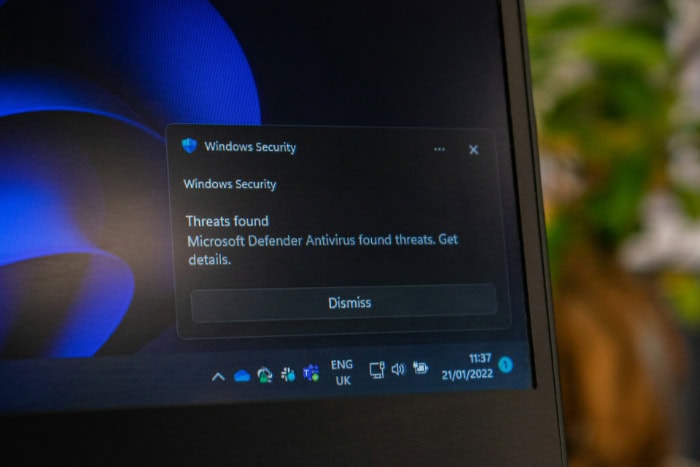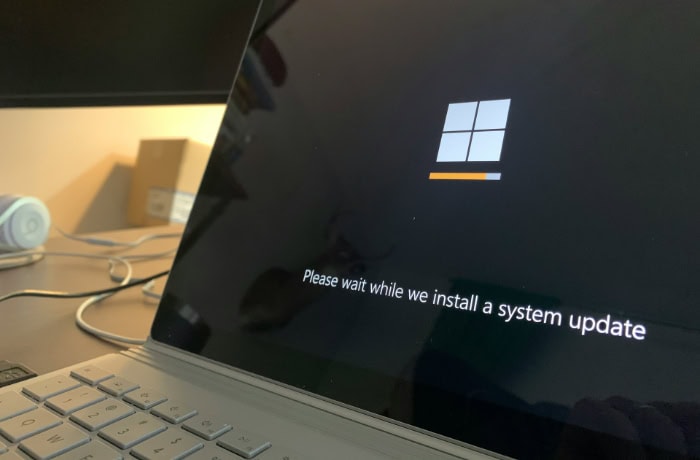Virus vs. Worm: Risks, Differences, and Protection Tips

Malware poses a constant threat to both individuals and organizations, disrupting daily life and business operations alike. Viruses and worms are two of the most notorious types, each with its own methods for causing chaos and spreading through computers and networks.
While they often get mentioned together, their behaviors and the strategies needed to stop them differ significantly.
Definitions and Core Characteristics
Malware comes in many forms, but viruses and worms remain two of the most recognized and disruptive. While they may share the ultimate goal of infecting computer systems and spreading as widely as possible, their core characteristics and methods of operation set them apart in important ways.
A clear look at what defines a computer virus versus a computer worm shines a light on how each operates and why their behaviors matter for anyone concerned with digital safety.
Computer Virus
A computer virus behaves much like its biological namesake, relying on a host in order to spread and replicate. It attaches itself to legitimate files or programs, waiting for a user to activate it through a specific action, such as opening an email attachment or running an executable file.
Without user interaction, a virus remains dormant, simply existing within the infected file or software. Once triggered, it can begin to copy itself to other files or programs on the system and sometimes attempt to spread to other devices by hitching a ride on files that are shared or transferred.
The reliance on user activity for activation means that viruses often spread more slowly compared to other forms of malware, but once unleashed, they can cause a range of damage, from corrupting data to degrading overall system performance.
Computer Worm
Unlike viruses, a computer worm does not need a host file or any user intervention to operate. It is a standalone program capable of self-replication.
After gaining a foothold on a system, typically through a vulnerability in the operating system or applications, the worm independently launches its own propagation process. It automatically seeks out other vulnerable devices on the network, using built-in routines to copy itself across systems with little to no human involvement.
The autonomous nature of worms means they can spread at alarming speeds, infecting large numbers of computers in a matter of minutes or hours. Beyond just spreading, worms often include code that performs harmful actions, such as deleting files, stealing data, or installing additional malware, amplifying the risk they pose to both individuals and organizations.
Propagation Methods

How malware spreads is just as important as what it does once inside a system. The methods that viruses and worms use to move from one computer to another reveal not only their technical sophistication but also the kind of risks they pose to users and organizations alike.
Viruses
Viruses depend heavily on human behavior to move from one system to another. They typically hitch a ride on files people use every day, like documents, spreadsheets, or popular software installers.
Email attachments remain a common vehicle, where an unsuspecting recipient opens a file that looks harmless but contains malicious code. File-sharing networks and portable storage devices can also be involved, as viruses hide within programs or files that are commonly shared among users.
Each new infection usually starts with someone intentionally opening or executing an infected file, making user awareness a critical factor in stopping their spread.
Worms
Worms take a different approach, leveraging the interconnected nature of modern networks. Instead of waiting for a user to open a file, a worm scans networks for weaknesses, such as unpatched software, outdated operating systems, or simple passwords that are easy to guess.
Once a vulnerability is found, the worm silently slips in and immediately begins searching for new systems to infect, often at an astonishing speed. Email lists, corporate networks, and even smart home devices can become unwitting carriers, helping worms replicate without any direct human intervention.
The sheer speed and autonomy of worms make them particularly dangerous in environments where security updates are delayed or overlooked.
Impact and Risks
Malware not only disrupts the systems it infects but can also trigger a cascade of problems affecting individuals, organizations, and even wider networks. The consequences differ dramatically, depending on whether the threat comes from a virus or a worm.
Viruses
Viruses typically target specific files or applications, and the damage often corresponds to the type of file they infect. On a compromised device, a virus might corrupt documents, overwrite system files, or gradually erode overall system performance, causing slowdowns, frequent crashes, or even data loss.
When sensitive files are erased or tampered with, victims can face anything from personal inconvenience to significant financial setbacks. Since viruses require user actions to spread, their destructive effects tend to remain confined to a local machine or a handful of computers until those infected files are shared.
The risk intensifies when infected files are unknowingly distributed to colleagues or friends, making prevention and detection all the more crucial.
Worms
Worms represent a broader and often more aggressive threat due to their autonomous nature and rapid replication. Unlike viruses, worms can compromise entire networks in a short period, resulting in consequences that reach far beyond a single device.
Massive amounts of network traffic generated by self-replicating worms can overwhelm servers and causes internet slowdowns for an entire organization or region. Bandwidth consumption skyrockets, sometimes leading to outages or loss of access to critical services.
Alongside direct disruption, worms frequently act as the opening act for more sophisticated attacks. They might install backdoors, giving cybercriminals long-term access to systems, or pave the way for ransomware by silently lowering defenses.
This combination of fast propagation and secondary threats means worms pose a unique and often more severe danger to anyone connected to a network.
Detection and Prevention Strategies

Recognizing and stopping malware quickly can make the difference between a minor inconvenience and a major disaster. Each type of threat, virus or worm, exhibits telltale signs and demands its own approach for detection and prevention.
Staying alert to suspicious symptoms and applying proactive defenses can significantly reduce the risk of infection and spreading.
Identifying Viruses
Signs of a virus infection often become frustratingly obvious as normal computer behavior starts to break down. Frequent crashes, a sudden increase in error messages, missing files, and unexpected pop-ups are all signals that something may be wrong.
Even a noticeable drop in performance or strange behavior from everyday applications can be an early warning. To minimize exposure, caution should be exercised when downloading files from unfamiliar sources or opening unsolicited email attachments.
Antivirus software provides an essential line of defense, scanning files for malicious code before harm can occur. Regularly updating antivirus definitions ensures the latest threats are caught, while scheduled scans maintain ongoing protection.
Ultimately, combining technology with careful user habits gives the best chance of avoiding a virus infection.
Mitigating Worms
Worms often announce their presence in less obvious but highly disruptive ways, such as sluggish network speeds, unexpected spikes in internet activity, or difficulty accessing shared resources. Unusual patterns of data being transferred across the network may signal that a worm is on the move.
Defending against worms centers on keeping systems resilient and tightly controlled. Applying software updates promptly helps close the security holes that worms typically exploit.
Firewalls act as gatekeepers, blocking unauthorized traffic and preventing worms from making new connections. Network monitoring tools add a further layer of protection, alerting administrators to suspicious activity before wide-scale damage takes place.
Since worms operate without needing user input, automation and vigilance are essential for effective prevention.
Notable Examples
Some malware incidents have become infamous, not only for the havoc they caused but also for the way they showcased the unique behavior of viruses and worms. Each example demonstrates how quickly threats can escalate once released, offering clear lessons about the importance of vigilance and proper security practices.
Viruses
The ILOVEYOU virus made headlines in 2000 by spreading rapidly through email with a seemingly innocent subject line. Once opened, the infected attachment would overwrite important files and send itself to everyone in the victim’s email address book, resulting in widespread disruption.
Quicker than many previous viruses, ILOVEYOU highlighted how social engineering and user interaction could amplify the reach of destructive code.
Another striking example, Stuxnet, surfaced in 2010 and targeted industrial control systems, primarily through infected USB drives. Unlike typical viruses, Stuxnet was designed to tamper with highly specific hardware and sabotage operations, demonstrating a level of precision that shocked security experts.
Its impact went beyond damaging files, it interfered directly with physical equipment, making it one of the first known examples of malware aimed at real-world infrastructure.
Worms
Worms have left their own marks on the history of cybersecurity. WannaCry, which emerged in 2017, exploited a vulnerability in Windows’ Server Message Block (SMB) protocol.
It spread automatically across networks, encrypting files and demanding ransom from victims worldwide. Hospitals, corporations, and government agencies found their operations paralyzed as the worm moved at lightning speed, underscoring the importance of timely software updates and global cooperation in combating cyber threats.
In 2016, the Mirai worm exposed the vulnerabilities of Internet of Things (IoT) devices. By infecting poorly secured cameras, routers, and other connected gadgets, Mirai assembled a massive “botnet” capable of launching devastating distributed denial-of-service (DDoS) attacks.
Websites and online services were knocked offline as the worm exploited the inherent weaknesses of everyday devices, showing just how easily a single piece of malware could disrupt global connectivity.
Each of these examples serves as a reminder of how serious the consequences can be when viruses and worms slip past our defenses. Their stories highlight not only technical ingenuity but also the lasting impact that a single outbreak can have on individuals, businesses, and society as a whole.
Conclusion
Viruses and worms may both fall under the malware umbrella, but they differ in fundamental ways that shape how they threaten our devices and networks. Viruses rely on host files and user actions to spread, often causing localized harm through file corruption or data loss.
Worms, on the other hand, operate independently and can propagate rapidly across networks without needing any human involvement, frequently leading to widespread disruption and opening the door to even more dangerous attacks.
Effective defenses must reflect these differences. Preventing virus infections centers on careful user behavior and vigilant use of antivirus tools, while countering worms demands regular updates, strong network protections, and continuous monitoring.
As malware continues to evolve, so must our awareness and response strategies. Remaining alert, staying informed, and educating ourselves and others are vital steps to keeping our technology and information safe against future threats.


